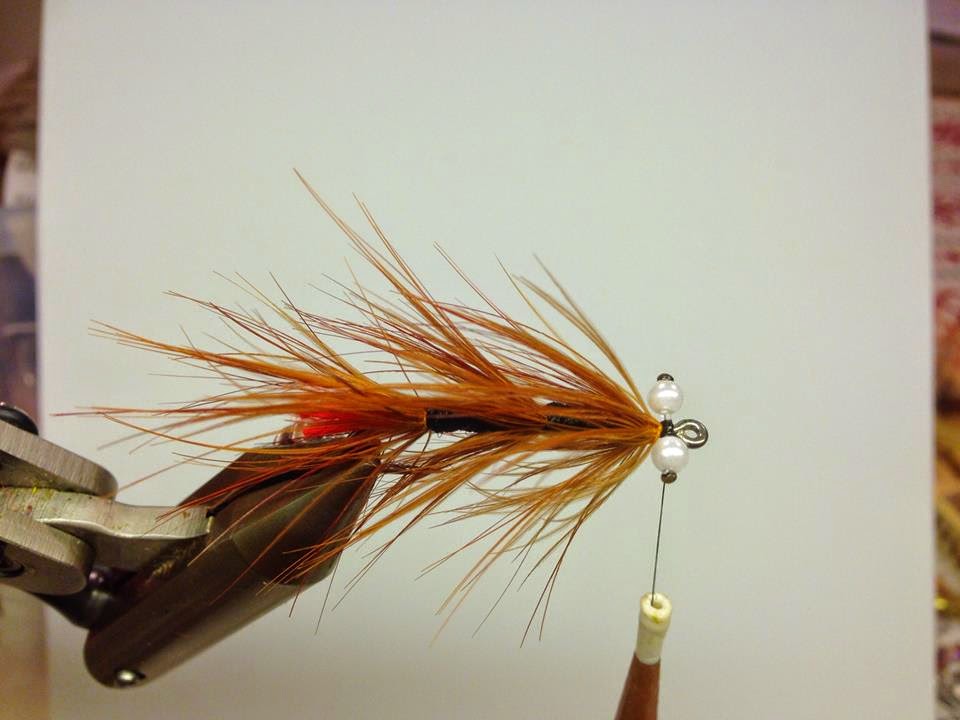Culture Night is a pattern that he developed by opportunity. During the Cultural night, a night event in culture characters in Lund, the city that Yuri lived in, in southern Sweden. He found some black shiny wool yarn and the day after that the culture night overnight was born. An excellent fly for coastal trout were created. I tied lots of them and used them frequently with great success. Even rainbow trout and sea trout in rivers fell for it. The original was tied with big eyes of synthetic pearl beads but to get the weight in them I also tied different variations with chain eyes and dumbbell eyes.
Yuri died sadly to soon in the mid-2000s while fishing on the Kola Peninsula river.
Bob Kenley has written a very readable article on the website Rackelhanen about Yuri on http://www.rackelhanen.se/eng/10316.htm
 |
| 1. Start with attaching the thread on the middle of the hook shank |
 |
| 2. Then take 2 or 3 (depending on how thick the woolyarn are) pieces of fluo orange or fluo red wool yarn and tie them in on top of the hook shank, like in the picture. |
 |
| 5. Attach the black wool yarn |
 |
| 6.Wind the black wool yarn forward to the middle of the hook shank. Attach it and cut of the rest. Repeat the steps in 4. for creating the middle boody hackle. |
 |
| 7. Attach a new strand of the black wool yarn |
 |
| 8. Wind a frontboody. Attach and cut of the wool yarn. Its important that you leave about 3-4 mm mm free for the fronthackle and the head and the eyes. |
 |
| 9. Tie in the fronthackle. |
 |
| 11. Attach 2 strands of mirage flash. The length of them should exceed just behind the tail and the hackle. |
 |
| 12. Now we should finish the flie whit the head. Attach the black wool yarn just in fron of the fronthackle. Wind the thread in front of the eyes. |






No comments:
Post a Comment